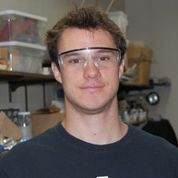
Major:
University:
Mentor(s):
Faculty Sponsor(s):
Faculty Sponsor's Department(s):
Project Title:
Project Description:
Sunlight contains sufficient energy to supply all the world’s energy needs, and thus a system capable of converting solar energy to storable forms is tremendously interesting. Despite intense research efforts, there is no cost-effective solar-to-fuel system, due to fundamental issues including instability of efficient semiconductor-absorbers and low solar energy conversion efficiency of stable materials as well as the high manufacturing costs of many semiconductor materials. Because improving the efficiency of stable materials (such as metal oxides) has been mostly unsuccessful, the method of stabilizing semiconductor-absorber materials with protective coatings merits consideration, if low-cost absorbers can be developed. Metal sulfides are a promising absorber group, because they have the potential to convert sunlight to fuels at efficiencies necessary for commercial viability (~10%), are non-toxic and can be made more inexpensively than traditional semiconductors such as gallium arsenide. A metal sulfide that shows great promise is the cheap, earth-abundant copper-zinc-tin-sulfide (CZTS). In this work we present the electrochemical synthesis and photoelectrochemical characterization of CZTS thin films on a molybdenum substrate. The effect of synthesis conditions, such as precursor concentrations, electrodeposition potentials, and post-deposition annealing environment, on the properties of the films was evaluated using high-throughput methodology. The results indicate that annealing at 500 °C under H2S:N2 atmosphere improves the photoelectrochemical properties of the material. Structural characterization of the synthesized thin films was conducted by X-ray diffraction (XRD). The photoelectrochemical activity of the films was evaluated in a Eu(NO3)2 electrolyte. A photocurrent density of 0.2 mA/cm2 for the optimized synthesis conditions is reported.
